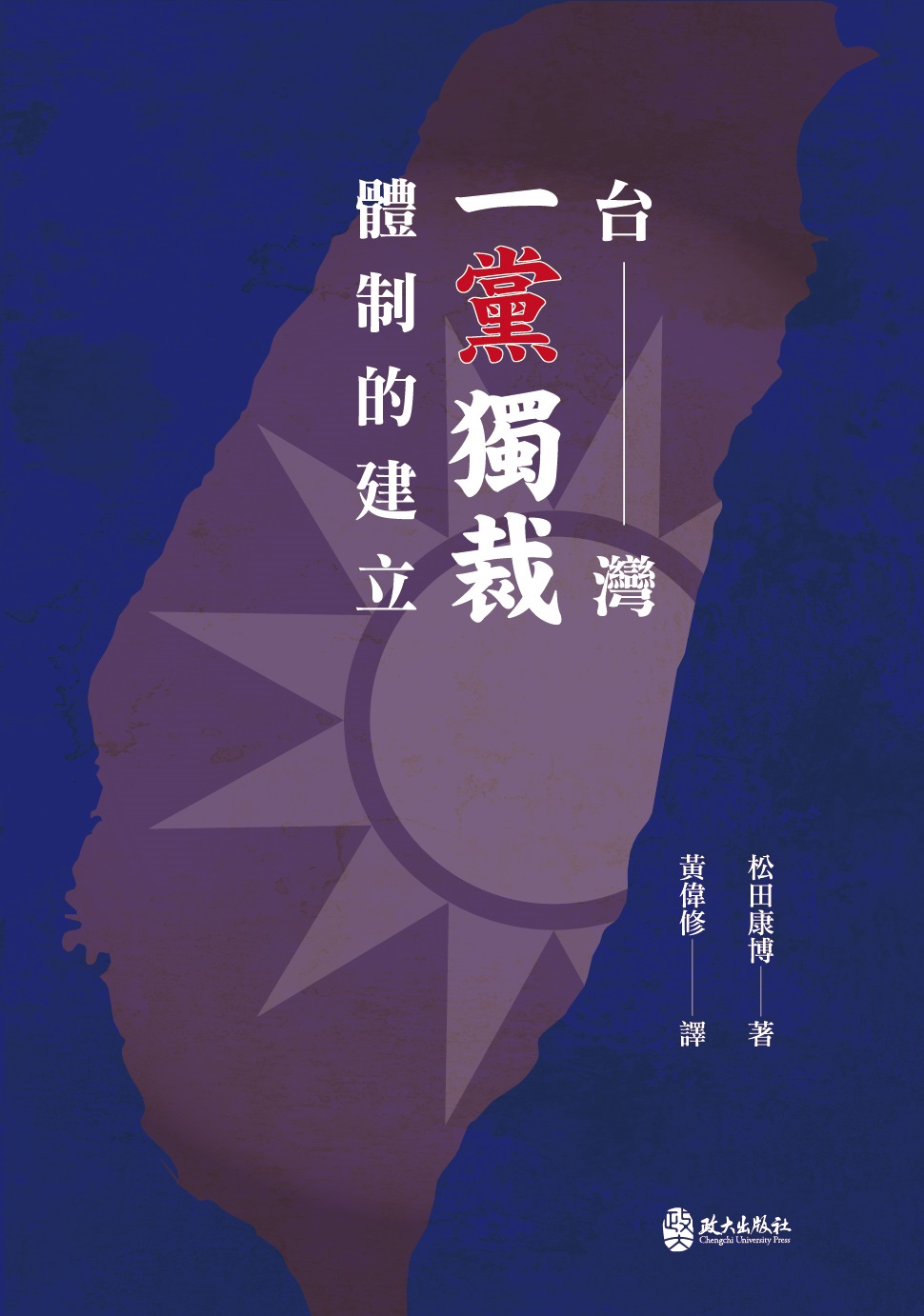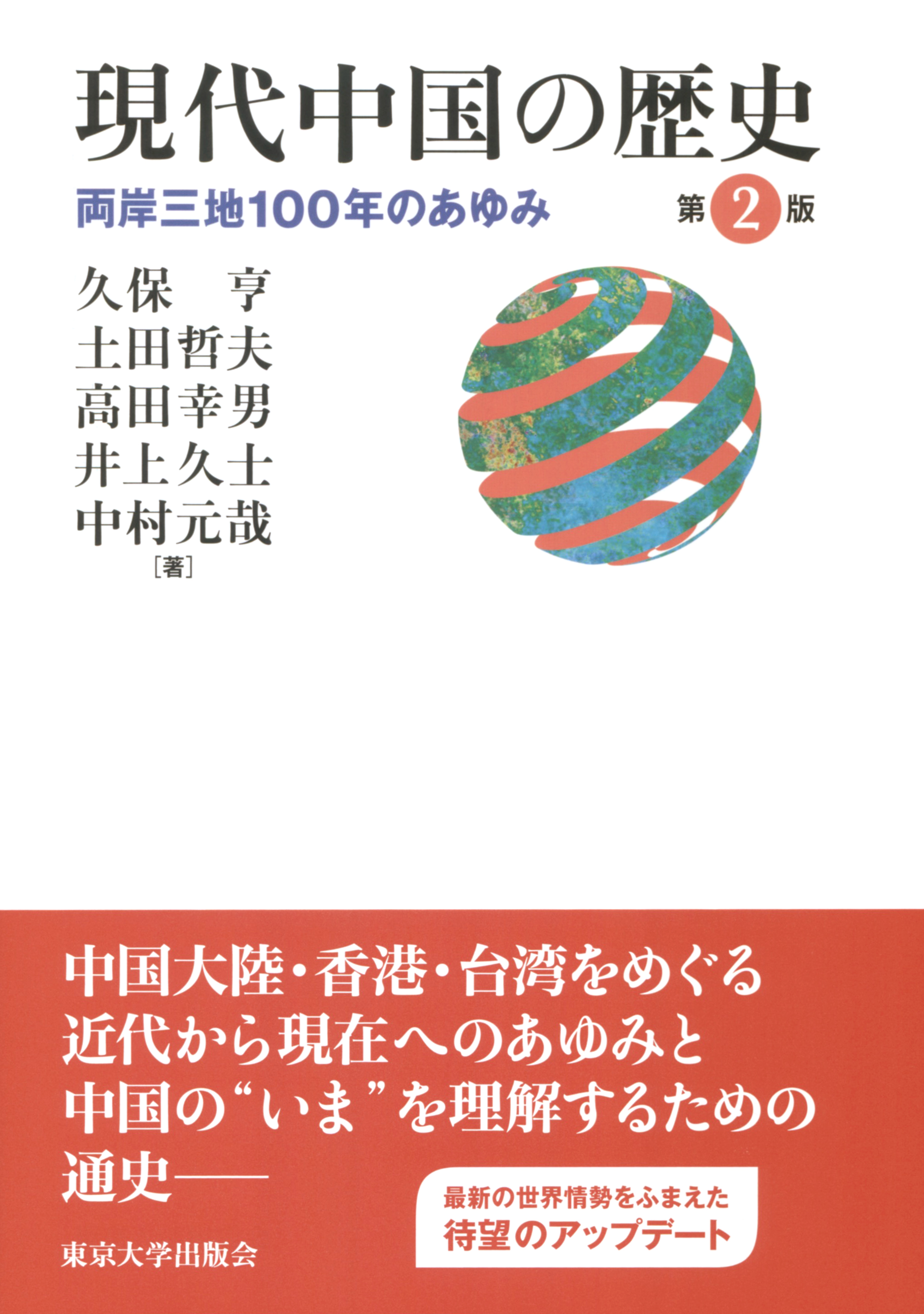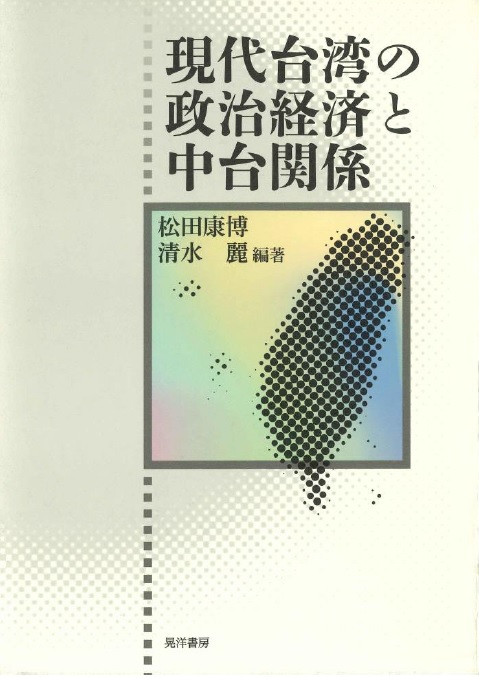
Title
台灣一黨獨裁體制的建立 (The Establishment of Taiwan’s One-Party Dictatorship)
Size
478 pages
Language
Chinese
Released
November, 2019
ISBN
9789869830430
Published by
Chengchi University Press
Book Info
See Book Availability at Library
Japanese Page
This book is a Chinese translation of The Establishment of Taiwan’s One-Party Dictatorship by Matsuda Yasuhiro (Keio University Press, 2006).
The Chinese Nationalist Party (Kuomintang or KMT) has been at the center of important events in Asia and the world in modern and contemporary times, such as the Sino-Japanese War, the civil war between the KMT and the Communist Party of China (CPC), three Taiwan Strait crises, and the democratization of Taiwan, and it is no exaggeration to say that it is one of the most important political parties in modern and contemporary Asia. It was defeated in the civil war with the CPC on account of factional strife and corruption, and in December 1949 it retreated to Taiwan together with the central government of the Republic of China, whereupon Chiang Kai-shek rebuilt the KMT and the government of the Republic of China in Taiwan. However, up until the publication of the original Japanese version of this book, the way in which the KMT established a one-party dictatorship in Taiwan had not been adequately examined, either in Japan or in Taiwan and elsewhere in the Sinophone sphere.
The academic contributions of the Japanese version of this book have long been recognized. Having classified the patterns of one-party rule implemented by the KMT, Matsuda made full use of historical sources and interviews with relevant persons to clarify how in the 1950s Chiang Kai-shek reformed the KMT’s organization, took control of the government, army, secret service, central and provincial administration, and bureaucracy, and built up a one-party dictatorship under the KMT centered on himself and his eldest son, Chiang Ching-kuo. Further, because the author placed importance on the continuities of history, he also analyzed not only Taiwan and the KMT in the 1950s but also the history of Taiwan during the period of Japanese rule, the international situation surrounding postwar China and Taiwan, the history of the KMT since the time of Sun Yat-sen, and the influence of the history of the national army of the Republic of China on the KMT’s one-party dictatorship, and this distinctive feature of the Japanese version of this book has also been widely recognized.
Here, I wish to mention the significance of the publication of this Chinese translation. Prior to the publication of the Japanese version, both in Japan and in Taiwan and elsewhere in the Sinophone sphere there had been very few monographs that focused on Taiwanese political history during the 1950s, and consequently this book has been quoted in many studies in the Sinophone sphere and used as an aid for teaching Taiwanese history and political history in graduate schools. Furthermore, in spite of not only advances in the study of the KMT’s one-party dictatorship but also the public accessibility of new historical sources such as Chiang Kai-shek’s diaries during the past fifteen years, this book continues to be held in high regard. However, it cannot be said that there are many specialists in Taiwanese history and modern and contemporary Chinese history in the Sinophone sphere who are proficient in Japanese as opposed to English and Chinese. Therefore, this book ought to contribute to the further deepening of research on Taiwanese history and modern and contemporary Chinese history in Taiwan and elsewhere in the Sinophone sphere.
Further, since democratization in the 1990s, transitional justice seeking to investigate human rights violations and injustices committed from the initial stages of the KMT’s rule of Taiwan to the period of one-party dictatorship has been an important research topic and political issue for researchers of Taiwanese history and the Democratic Progressive Party, which aspires to independence, and since the establishment of a Democratic Progressive Party government under Tsai Ing-wen in 2016 this has finally been carried into effect as government policy. Since its publication, this book has been quoted in many studies on transitional justice and policy reports in the Sinophone sphere. Furthermore, during the past few years China has been creating a dictatorial régime centered on Xi Jinping, and it is possible to take the view that he is using methods similar to those employed by Chiang Kai-shek. Therefore, this book may be regarded as a guidepost for examining Taiwanese and Chinese political history over the long term.
(Written by Wei Hsiu Huan, Assistant Professor, Institute for Advanced Studies on Asia / 2021)
Table of Contents
第一章 中國國民黨的「改造」
第一節 問題之所在
第二節 概觀國民黨的「黨治」類型
第三節 「改造」的實施背景
第四節 「改造」的實施
第五節 小結
第二章 中央的黨政關係
第一節 問題之所在
第二節 從「以黨治國」到「以黨領政」
第三節 黨與正副總統、總統府
第四節 黨與中央民意代表機關
第五節 黨與行政院
第六節 黨與司法院、考試院
第七節 小結
第三章 黨的地方控制
第一節 問題之所在
第二節 國民黨與國府在大陸時期的地方控制
第三節 外省人支配與「省籍矛盾」
第四節 台灣的「中央化」與省長民選的凍結
第五節 對省政府・議會的控制
第六節 對縣市政府・議會的控制
第七節 小結
第四章 黨與軍隊
第一節 問題之所在
第二節 大陸時期的國軍
第三節 撤往台灣與國軍的中央化
第四節 在台灣進行的國軍改編
第五節 黨對國軍的控制
第六節 小結
第五章 黨與特務組織
第一節 問題之所在
第二節 大陸時期的特務組織
第三節 從國共內戰到撤退台灣
第四節 蔣經國推動的特務組織改組
第五節 對「白色恐怖」的影響
第六節 小結
第六章 土地改革政策的決策過程
第一節 問題之所在
第二節 國府的地政、農業技術官僚
第三節 前期土地改革
第四節 後期土地改革
第五節 小結
終章 結論
後記
譯者後記
史料、文獻目錄
Related Info
http://www.ioc.u-tokyo.ac.jp/~ymatsuda/
Wei Hsiu Huan:
https://weihsiuhuang.jimdofree.com/
Awards:
The 17th Nakasone Yasuhiro Award (NPI Nakasone Peace Institute Oct 29th, 2021)
https://npi.or.jp/en/award/winner_17.html
Japanese Edition:
The Establishment of Taiwan’s One-Party Dictatorship by Matsuda Yasuhiro (Keio University Press, 2006).
https://www.keio-up.co.jp/np/isbn/9784766413267/
Chinese Edition:
Book Description by the translator, Wei Hsiu Huan (in Chinese)
https://www.ioc.u-tokyo.ac.jp/news/pub2002_ymatsuda.html
(Japanese Edition) Review:
Myers,Ramon, (The China Quarterly, Vol. 109, pp. 813-816. 2009年9月)
https://www.cambridge.org/core/services/aop-cambridge-core/content/view/3C0EE5309A1CC6C472707DDA81B05D1B/S0305741009990890a.pdf/cqy_volume_200_cover_and_back_matter.pdf



 Find a book
Find a book



